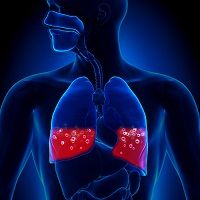Article
For Pulmonary Hypertension Sufferers, Plant Leaves Could be Key to Relief
Author(s):
A collaborative effort from researchers at the University of Pennsylvania and University of Florida has yielded plant leaves as a viable treatment for pulmonary hypertension.

A collaborative effort from researchers at the University of Pennsylvania (UPenn) and University of Florida (UF) has yielded plant leaves as a viable treatment for pulmonary hypertension (PH).
In patients with pulmonary hypertension, the arteries of the lungs become constricted, leading to an enlargement in the heart’s right chamber. The few available effective drugs come with a large price tag‑‑up to ten thousand dollars, a UPenn statement mentioned.
“Pulmonary hypertension is relatively a rare disease. It’s been neglected by the industry, and so there aren’t many drugs out there,” said Vinayak Shenoy, an assistant research scientist in the College of Pharmacy Department of Pharmacodynamics at UF who contributed to the study. “The first drug for pulmonary hypertension was approved in 1995, although the disease was known since the early 1900s.”
The study, published in Hypertension, highlighted the benefits of genes comprised of angiotensin-converting enzyme 2 (ACE 2) and angiotensin-(1-7) [Ang-(1-7)] proteins . Not naturally occurring in plants, the study’s senior author, Henry Daniell, a professor of biochemistry and pathology and director of translational research at UPenn’s School of Dental Medicine has bred the genes into tobacco’s chloroplasts. The plants are then freeze-dried and made into tablets for consumption, according to the statement.
“The proteins we were dealing with are very large and unstable, only lasting a few minutes in the bloodstream when given as an injection,” Daniell said. “We needed to find a way to stabilize the proteins to increase their lifespan in the bloodstream and make sure it was working the way we wanted it to.”
To achieve this, the proteins were bound to another protein which attached itself to intestinal cells.
Compared to other PH medications, which yielded limited improvement of 10 percent, the investigators’ new medication reduced symptoms by 20 percent in rat models given the drug for two weeks. After four weeks, the medication decreased pulmonary pressure by 32 percent. The researchers also noted improved heart function in the right chamber, which reduces the risk of heart failure (which is usually the cause of death in PH sufferers).
“A combination therapy with ACE2 and Ang-(1-7) augmented the beneficial effects against monocrotaline-induced lung injury,” the writers concluded. “Our study provides proof-of-concept for a novel low-cost oral ACE2 or Ang-(1-7) delivery system using transplastomic technology for pulmonary disease therapeutics.”


